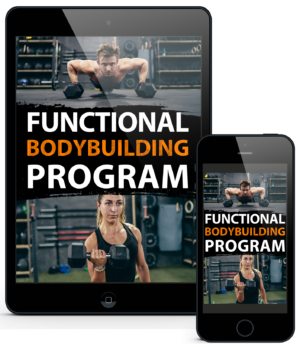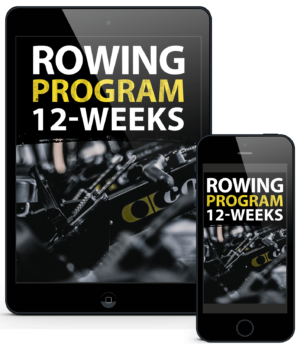“Should I track my heart rate during workouts?”
This is one of the most common questions we hear from our athletes.
The answer? Well, it sort of depends…
If you’re serious about your training, a heart rate monitor can provide great insight. With a heart rate monitor, you can more accurately measure how your body responds to different kinds of training modalities. And you can easily assess your workout intensity.
But if you’re not focused on your personal workout data (i.e. you’re just there to get a good sweat and go home), then a heart rate monitor won’t be that helpful/exciting.
Why should I track my heart rate?
If you want to accurately measure your intensity in workouts, then a heart rate monitor is a must. A heart rate monitor measures how quickly your heart beats in relation to your level of physical intensity.
We recommend the Polar Heart Rate Sensor Chest Strap (see link below).
It’ll hold up during aerobic-specific workouts, as well as mixed modal-type sessions.
Polar Heart Rate Sensor Chest Strap (Polar H10):
https://www.wodpartner.com/sbpT

Note: Polar has a free downloadable app for smartphones that works great with the above-mentioned chest strap.
What is heart rate training?
Your heart rate is measured by the number of times it beats per minute. While at rest, a lower heart rate is actually optimal. This is because a stronger heart pumps more blood to your system per beat than a weaker heart, thus requiring less beats per minute.
Because your heart is a muscle, it becomes stronger as you exercise it. During an aerobic workout, large groups of your body’s muscles are used over an extended period of time in a consistent, rhythmic manner.
When worked in this way, your muscles demand oxygen. The harder you work your muscles, the more oxygen they require. This oxygen is supplied to your muscles from your lungs via the bloodstream. As a result, your heart pumps faster during a workout in an effort to deliver the additional oxygen your muscles demand.
When you measure your heart rate with a heart rate monitor, you can more accurately gauge the effectiveness of your workout. As you strengthen your body through exercise, you also strengthen your heart. When you measure your heart rate during exercise, you can:
- Determine when you’re going too hard
- Determine when you need to push harder
To understand how to condition your body through heart rate analysis, it’s important to understand the four different types of heart rates…
Resting Heart Rate
Your resting heart rate is the rate that your heart beats per minute during periods of the day when you’re most relaxed. Your RHR can be measured after you get out of bed or during a period of the day when you’re sitting or relaxing comfortably.
Although heart rates vary between individuals, the average RHR for a man is between 60 to 80 beats per minute. The average for a woman is between 70 to 90. An adult in good shape can have an RHR in the low 60’s, while an unhealthy RHR can be as high as 100.
A very well conditioned athlete can have an RHR in the 40’s. To get an accurate measurement of your resting heart rate by using a heart rate monitor, take measurements at different rested periods of the day over the course of a week—and then average them out.
Maximum Heart Rate
Your maximum heart rate is the peak amount of beats that your heart has the potential to reach. You’ll reach your MHR when you’ve pushed your heart as far as it can go during an aerobic workout.
It’s extremely difficult to accurately measure your MHR. Experienced endurance athletes do so at fitness laboratories using an electrocardiogram (ECG). Because this measurement is so sophisticated, scientists have developed a formula that everyone can use: Subtract your age from the number 220. With this formula, if you’re 35, your MHR would be 185. This formula is not an exact science and does not ensure complete accuracy. (Important: It can be dangerous to attempt to measure your maximum heart rate, as you can cause serious damage to your body if you push it too hard.)
Training Heart Rate
Your training heart rate is the heart rate you maintain during aerobic workouts in an effort to improve fitness. In order to properly train with a heart rate monitor, you should work out at a steady, rhythmic pace. This will allow you to capture consistent measurements.
The right number to train at depends on your fitness goals and is widely debated among professionals. To promote general fitness, you can train as low as 50 percent or as high as 70 percent of your MHR.
For more experienced athletes, it’s argued that this number can be above 70 percent and as high as 80 percent of your MHR. The lower numbers are recommended for beginners.
You’ll likely reach the 50–60% range while briskly walking, the 60-70% range while running for a steady period of time, and the 70-80% range while running at a fast pace for extended periods of time.
Recovery Heart Rate
It’s important to give your body proper rest after a workout. Your recovery heart rate is the rate that you should bring your heart rate down to after a workout. A good number to go by is 20 beats within your pre-workout resting heart rate.
How Heart Rate Monitors Work
Using a heart rate monitor is very simple. The most effective monitors measure your heart rate with a transmitter that is placed over the heart and held in place by an adjustable strap that wraps around your chest. Just like an electrocardiogram (ECG), the transmitter detects electrical activity. This activity is relayed by a cord connected to a wristwatch with a graphic display.
There are a variety of heart rate monitor models on the market. The most basic monitors simply display your heart rate. More advanced models have features that include alarms that sound when you’ve gone above or below your pre-programmed number. Other features can include pre-programmed workouts, countdown timers, calories burned and more.
To go into further detail, let’s talk about the heart rate zones.
What are heart rate zones?
We all have a personal resting heart rate, a “minimum heart rate,” and a maximum heart rate. And between these values are different heart rate zones that correspond to training intensity and training benefit.
There are different ways to specify your heart rate zones. One simple way is to define them as percentages of your maximum heart rate, and that’s what we’ll focus on in this introduction. It’s also worth noting that heart rate zones are closely linked to your aerobic and anaerobic thresholds.
Five Heart Rate Zones
There are five different zones, 1–5, and your training plan can include workouts in all five zones.
Below is a breakdown of what each heart rate zone means, and what the benefits of training in that heart rate zone are.
HEART RATE ZONE 1: 50–60% OF HRMAX
This is the very low intensity zone. Training at this intensity will boost your recovery and get you ready to train in the higher heart rate zones.
To train at this intensity, pick sports during which you can easily control your heart rate, such as walking or cycling.
HEART RATE ZONE 2: 60–70% OF HRMAX
Exercising in heart rate zone 2 feels light. You should be able to go on for a long time at this intensity.
This is the zone that improves your general endurance. Your body will get better at oxidizing (or burning) fat, and your muscular fitness will increase along with your capillary density.
Training in heart rate zone 2 is an essential part of every runner’s program.
HEART RATE ZONE 3: 70–80% OF HRMAX
Training in heart rate zone 3 improves the efficiency of blood circulation in the heart and skeletal muscles. This is the zone in which that pesky lactic acid builds up in your bloodstream.
Training in this HR zone will make moderate efforts easier and improve your overall efficiency.
HEART RATE ZONE 4: 80–90% OF HRMAX
Heart rate zone 4 is where the going gets tough. You’ll breathe hard in this zone.
If you train at this intensity, you’ll improve your speed endurance. Your body will get better at using carbohydrates for energy, and you’ll be able to withstand higher levels of lactic acid in your blood for longer.
HEART RATE ZONE 5: 90–100% OF HRMAX
Heart rate zone 5 is your max effort. Your heart and your blood and respiratory system will be working at their maximal capacity. Lactic acid will build up in your blood, and after a few minutes you won’t be able to continue at this intensity.
If you’re just starting out, you probably won’t have to train at this intensity. If you’re a professional athlete, look into incorporating interval training into your training plan for peak performance.
A brief summary
- You should track your heart rate using a heart rate monitor if you’d like to more accurately measure your workout intensity.
- There are four different types of heart rates: Resting Heart Rate, Maximum Heart Rate, Training Heart Rate, and Recovery Heart Rate. An adult in good shape can have an RHR in the low 60’s, while an unhealthy RHR can be as high as 100.
- There are five different zones, 1–5, and your training plan can include workouts in all five zones. As the zones increase numerically, so does the intensity.
- There are a variety of heart rate monitor models on the market. We recommend the Polar Heart Rate Sensor Chest Strap (see link below). It’ll hold up during aerobic-specific workouts, as well as mixed modal-type sessions.
Polar Heart Rate Sensor Chest Strap (Polar H10):
https://www.wodpartner.com/sbpT

Note: Polar has a free downloadable app for smartphones that works great with the above-mentioned chest strap.





